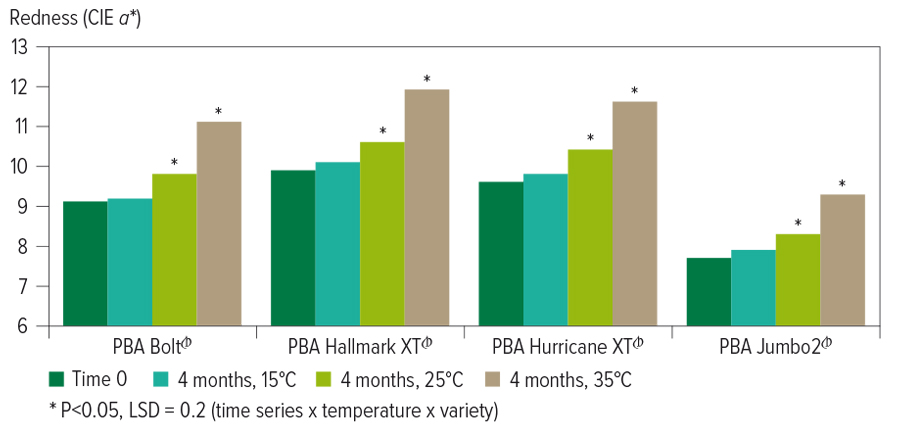Key points
- A new study is investigating the impact of high temperatures and high moisture content on lentil storage to help growers protect grain quality
- Important quality traits such as seed coat colour (redness), germination efficiency and cooking quality were adversely affected by inappropriate storage conditions in as little as four months
Lentil storage study to bring cold, hard facts to hot issue of safeguarding grain quality.
Storing lentils on-farm can help growers streamline logistics and target better prices. However, the impact of storage on important market traits such as colour, cooking quality and germination is still a bit of a mystery.
Hot and sometimes wet summers mean grain can often exceed storage recommendations. Pulses should not exceed 25°C or 12 per cent moisture. But what happens to quality when high-value grains, such as lentils, are stored under these conditions and how long before it is detrimental to market targets?
A new study is quantifying these impacts, with GRDC and Agriculture Victoria co-investment through the Victorian Grains Innovation Partnership.
The work, undertaken as part of a PhD study through the Centre for Agricultural Innovation (a joint initiative between Agriculture Victoria and the University of Melbourne), aims to develop grain storage models to predict the quality of lentils stored in large-scale silos. These will enable growers to predict the ramifications of suboptimal conditions on lentil quality and clarify intervention steps to limit the impact.
Samples of four commercial red lentils – PBA Hurricane XT, PBA Hallmark XT, PBA Bolt and PBA Jumbo2 – were collected from growers in the Victorian Wimmera after the 2020-21 harvest. The samples were placed in storage at four different temperatures (4°C, 15°C, 25°C and 35°C) and two different grain moisture conditions (10 and 14 per cent), which were sampled for analysis each month for 12 months. The quality traits being assessed in the study include:
- physical traits – seed coat colour, germination efficiency, splitting efficiency and cooking quality measured as hydration efficiency, grain hardness and cooking time; and
- chemical composition – total phenolics, total tannins and free fatty acids.
Impact on quality
International markets place a high value on a bright red seed coat; however, lentil seed typically darkens during storage. The study, which measured seed colour using the Commission Internationale de l’Eclairage (CIE) colour parameters for brightness (CIE L*) and redness (CIE a*), found that all lentil varieties were significantly darker and browner after only two months when stored at high temperatures (25°C and 35°C) and that colour continued to decline at four months (Figure 1).
Figure 1: Lentil seed coat colour change over a four-month period was significant (*) when the grain was stored at high temperatures (25°C and 35°C). Colour measured as redness (CIE a*) where increasing values represent deterioration.

Source: Bhawana Bhattarai
Initial grain viability was more than 97 per cent but, when stored at high temperature (35°C) and high moisture (14 per cent) for four months, germination efficiency dropped for PBA Bolt (73 per cent), PBA Hallmark XT (57 per cent) and PBA Hurricane XT (84 per cent). Curiously, it remained unchanged for PBA Jumbo2. The other temperature and moisture combinations had no impact on germination after four months.
The study also found a significant decline in cooking quality, though not for all varieties. For example, three lentil varieties stored for four months at 35°C and low moisture (10 per cent) required more time to cook through, while PBA Hallmark XT at the high temperature retained cooking quality after storage.
At high moisture all varieties needed more time to cook through when the grain was stored at high temperatures (25°C and 35°C). Seed that requires more time and energy to cook is particularly undesirable in countries where the cost of cooking fuel is expensive.
More information: Dr Cassandra Walker, 0419 514 253, cassandra.walker@agriculture.vic.gov.au

























































